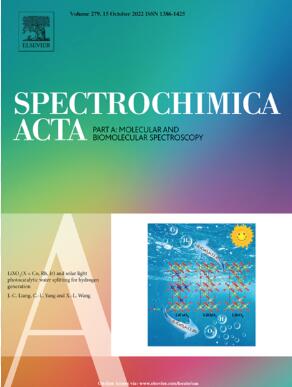Stochastic resonance-based Raman spectroscopy denoising
IF 4.3
2区 化学
Q1 SPECTROSCOPY
Spectrochimica Acta Part A: Molecular and Biomolecular Spectroscopy
Pub Date : 2025-04-04
DOI:10.1016/j.saa.2025.126094
引用次数: 0
Abstract
Raman spectroscopy is a non-destructive technique that analyzes the vibrational modes and other properties of molecular systems by measuring scattered light from a laser. However, due to the short exposure time and low power of the excitation laser, Raman signals are often very weak, sometimes even weaker than the noise, making them prone to being overwhelmed by noise. This reduces sensitivity and classification accuracy, affecting practical applications.
Currently, traditional denoising methods face several challenges, primarily because their effectiveness heavily depends on manual parameter tuning, which is not beginner-friendly and adds complexity to using these methods. This study proposes an Adaptive Bistable Stochastic Resonance (ABSR) system, which enhances signals by utilizing noise energy and adjusts system parameters through a Particle Swarm Optimization (PSO) algorithm, eliminating the need for manual parameter tuning to achieve optimal signal enhancement.
In the experimental section, the denoising performance of the ABSR algorithm was systematically validated using simulated Raman spectra. The experimental results demonstrate that, compared to traditional methods such as Savitzky–Golay (SG) filtering, Gaussian filtering, Soft and Hard Threshold Wavelet Transform (SHTWT), Adaptive Savitzky–Golay (ASG), and Stein’s Unbiased Risk Estimate Wavelet Transform (SUREWT), the ABSR algorithm exhibits significant advantages in denoising effectiveness. Specifically, ABSR is more effective in preserving the detailed features of spectral signals while demonstrating superior performance in noise suppression. Besides, using Raman spectra from diabetic patients, ABSR showed significant improvements in SNR and RMSE, and performed better in classification algorithms like SVM, Random Forest, and Decision Trees. The ABSR method effectively enhances Raman spectral resolution, reduces laser exposure, and is simple to use, making it valuable for beginners in Raman spectroscopy research.

求助全文
约1分钟内获得全文
求助全文
来源期刊
CiteScore
8.40
自引率
11.40%
发文量
1364
审稿时长
40 days
期刊介绍:
Spectrochimica Acta, Part A: Molecular and Biomolecular Spectroscopy (SAA) is an interdisciplinary journal which spans from basic to applied aspects of optical spectroscopy in chemistry, medicine, biology, and materials science.
The journal publishes original scientific papers that feature high-quality spectroscopic data and analysis. From the broad range of optical spectroscopies, the emphasis is on electronic, vibrational or rotational spectra of molecules, rather than on spectroscopy based on magnetic moments.
Criteria for publication in SAA are novelty, uniqueness, and outstanding quality. Routine applications of spectroscopic techniques and computational methods are not appropriate.
Topics of particular interest of Spectrochimica Acta Part A include, but are not limited to:
Spectroscopy and dynamics of bioanalytical, biomedical, environmental, and atmospheric sciences,
Novel experimental techniques or instrumentation for molecular spectroscopy,
Novel theoretical and computational methods,
Novel applications in photochemistry and photobiology,
Novel interpretational approaches as well as advances in data analysis based on electronic or vibrational spectroscopy.

 求助内容:
求助内容: 应助结果提醒方式:
应助结果提醒方式:


